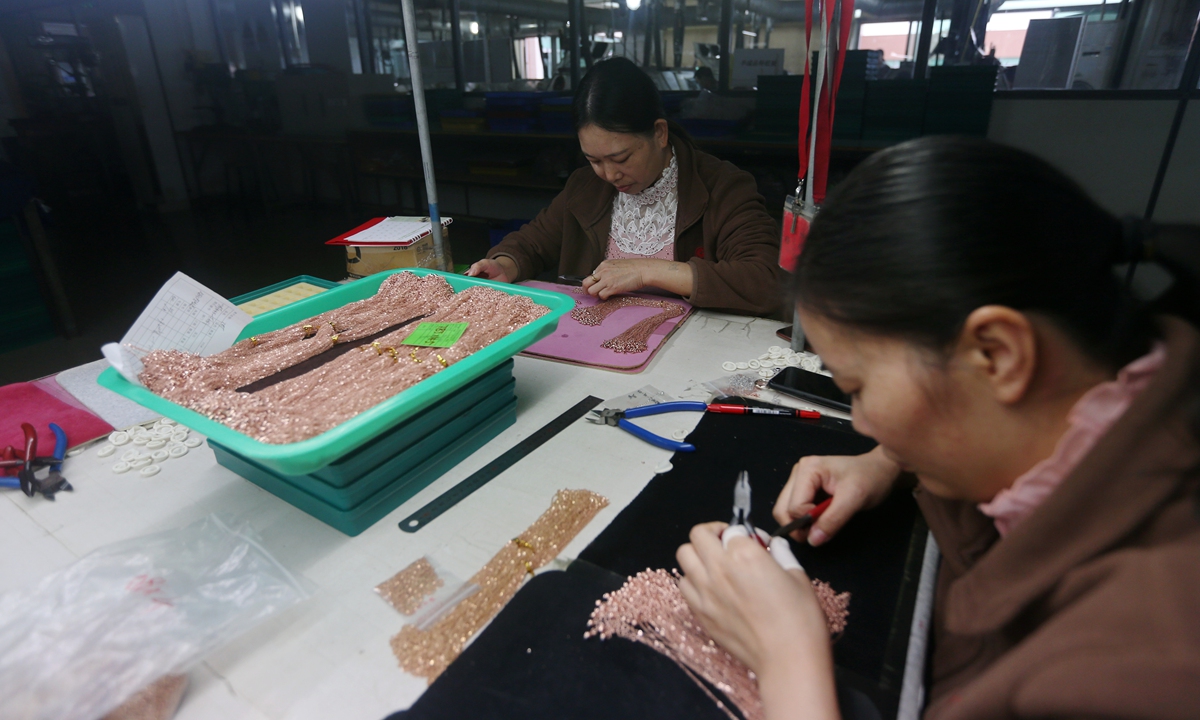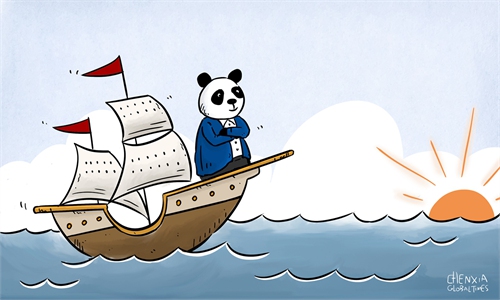SOURCE / INDUSTRIES
Reporter’s diary: China’s strong industrial supply chains have not only ensured its growth, but also supplied global markets amid pandemic

Workers make necklaces in a daily necessities factory in Dongguan on December 14. Photo: Cui Meng/GT
If you never visit Dongguan, a city located in South China's Guangdong Province where many factories that manufacture high-value-added products are based, it's probably hard for you to understand that why, under the impact of global COVID-19 pandemic, China would be the only major power in the world, as forecast by the IMF, to record positive economic growth.
It could be even harder to understand that why, as many factories in other countries have to suspend operations due to the pandemic, Chinese factories can be first in the world to resume business, or why the export data could see a more than 20 percent increase year-on-year in November.
With these questions in mind, I paid a visit to Dongguan, which is well-known in the world by its nickname - the world's factory. And after talking to more than 10 manufacturers from various industries including toys, daily consumer goods and electronic parts, the answers gradually emerged.
Of course, there are many factors behind these answers. China's successful control of the coronavirus has played a vital role as it allowed safe people movement which guaranteed the business and production activities resumption.
But more importantly, China's highly integrated industrial supply chains that ensure factories' access to raw materials, and guaranteed the smooth connection between upper streams to down streams, is a major reason behind all of the questions.
Dongguan is unique for being home to several industrial clusters. In other words many industries are concentrated in different towns, which reflected the industrial development level of the city.
When I first entered the campus of DeRUCCI, a mattress manufacturer in Houjie town where many furniture factories are located, first things could be seen were many trucks outside warehouse waiting for loading; inside the company's workshop, workers were busy making mattresses on the production lines. Other than the masks that workers were wearing, everything in the factory looked normal, as if the global pandemic never happened.
A manager of the company told me that their OEM orders have seen a dramatic increase this year as many of their clients could not find factories in other counties to produce. And the company's production lines that only require domestic materials are not affected because supplies from upper streams are operating well.
A manager from IFE, a listed elevator maker in Dongguan, told me the supply chain of the elevator sector in China, following years of development, has become mature and integrated. "We could almost get any standard component within a day," the manager surnamed Bai said to me.
In a magnetic parts factory, a manager surnamed Tang told me that there is an interesting phenomenon that the company's overseas parts orders declined this year, because their downstream clients overseas could not resume operations. However, the orders of finished products have seen sharp increase.
"This might show that despite the operation suspension overseas, customers' demand is still present, and China's production has helped meet these demands," Tang said.
These entrepreneurs' voices are echoed by Chinese official data. According to Chinese Customs, China's export increased 3.7 percent year-on-year in the first 11 months, of which the textile including masks increased 33 percent, while plastic product exports increased 20.1 percent.
Combined with the official data and the businesspersons' voices, the answer of the questions mentioned above has become clear - China's strong industrial chain that the country has developed for decades has ensured the country's economic growth, and even guaranteed the world's supply.


